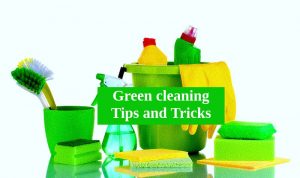 You may have heard that conventional cleaning products can be harmful to human health, as well as the environment. If you are aware of this fact, it is time you take action and turn to green cleaning. If you already did that or are simply interested in the idea, you may find the tips and tricks we have to share in this article useful. They are perfect for beginners and will show you how to make the best out of natural products.
You may have heard that conventional cleaning products can be harmful to human health, as well as the environment. If you are aware of this fact, it is time you take action and turn to green cleaning. If you already did that or are simply interested in the idea, you may find the tips and tricks we have to share in this article useful. They are perfect for beginners and will show you how to make the best out of natural products.
We will talk about the basics of green cleaning, how to make your own cleaning products, and which natural products are the best. Even professional cleaners are using some of these methods. Keep reading to find all of that information and much more.
Learn about natural cleaning products
Before you start making your own cleaning products, it is important to understand what the different ingredients can be used for and which ones can’t be mixed with each other.
Most of the issues around mixing natural ingredients center around vinegar. It is one of the key ingredients used in green cleaning, however, it can be a little anti-social. Be careful what you mix it with, since dangerous consequences may come to you.
Mixing vinegar with bicarbonate soda, borax, or castile soap is something you should not attempt. Vinegar reduces the effectiveness of those products. However, there are worse combinations, such as vinegar and bleach, or hydrogen peroxide. The reaction between those ingredients will create hazardous fumes.
Do not rush into green cleaning
Green cleaning is not a race, so it is best to take it slow. Take a commercial product that you have and as it runs out, make a green alternative to it. By making your products one by one, you will be able to reduce waste (by reusing the old bottles from your conventional products) and get the time to find out what works best for you. Take the time to test out different products, combinations, and scents.
Reuse anything you can
Minimise help by reusing anything you can. Keep spray bottles and spray nozzles from old products. When you finish a commercial product, wash its bottle with warm soapy water and reuse it for your newly homemade green cleaning one. To clean spray nozzles, dip the end in a cup of hot soapy water and spritz a few times in order to rinse the inside completely. You can also use old vinegar or gin glass bottles.
Gather ingredients that you will be using
There are many natural ingredients that may come in handy. Some of the best ones are vinegar, baking soda, citric acid, soda crystals, and castile soap. Keep these in hand and experiment with them to see what works best for your cleaning schedule.
Acquaint yourself with essential oils
Essential oils are going to be your best friend when creating green cleaning products. While some essential oils are simply used for scent, there are others that will provide you with vital functions. Citrus-based ones are great for degreasing and lavender oil has antifungal properties. That makes them key ingredients in any homemade cleaning product.
Make sure you do your homework when picking your essential oils. Some have specific warnings about usage. Tea tree oil, for example, can be toxic to cats, while eucalyptus and peppermint are best not used around children or babies. Make sure you always dilute them well.
Think about storage
Most natural cleaning products have a life of no more than 6-8 weeks. Make sure you make them in small amounts (such that you can use them in that time period). If you use boiled water, you will remove the bacteria from regular tap water and prolong their shelf-life. Your storage place is also important. If you have pets or children in the house, make sure you store your homemade cleaning products out of their reach. They can still be dangerous to them. It is a great idea to label your bottles. Keep in mind that DIY cleaning products can look alike so it is best if you label them to be sure which bottle you are reaching for.
Get the cleaning supplies you will be needing
Even though natural cleaning products are safer than commercial ones, they can still irritate you if you have sensitive skin. It is best to collect proper cleaning tools that will help you clean in the best, most efficient manner. If you suffer from allergies or have sensitive skin, you can use rubber gloves. Another good idea is to get a number of sponges and brushes, to use with the different products. That way you will be able to avoid accidentally mixing ingredients that should not be combined.
